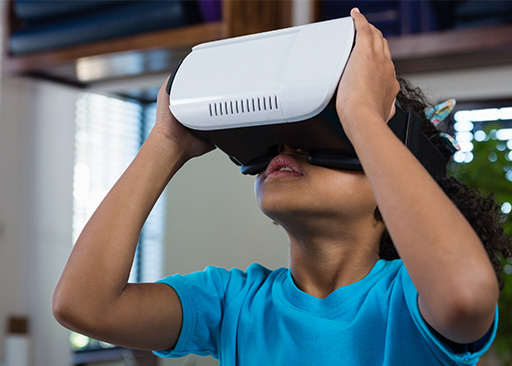How Guided Imagery Improves Your Patient’s Body and Mind

Negative thoughts can bring about more reactions like aches and pains. Even if the physical injuries heal, if they are still in a negative place in his mind, he will never fully recover. Here is more information on the connection, the approach, and how you can create an effective plan.
The Body-Mind Connection
In holistic medicine, the whole body is considered whenever the they complain of symptoms. So, the approach needs to be comprehensive. It means including the body, mind, and spirit.
Consider the brain as the command center, it is a machine that issues instructions to dictate how it should act. The brain interconnects in a complex network in the neural system.
The brain controls emotions and regulates the release of hormones and chemicals or neurotransmitters. These hormones can impact the functions such as appetite, the sleep-wake cycle, and much more.
When they feel stressed, his brain releases two stress hormones: cortisol and adrenaline. These hormones trigger the “flight or fight” reaction. They provide a rush of energy, the adrenaline rush, that signals that they must protect themselves from a harmful situation.
While there is often no real physical danger, they will still reacts to this. Your patient might experience problems with his digestive functions. He might develop a weaker immune, and the lack of stress management can slow down his healing.
Such thinking can also put your them in a slump. Thought patterns such as constantly worrying about something, expecting the worst, criticizing oneself, giving up, and hopelessness can be detrimental to physical and mental health. Guided imagery scripts can help break that cycle of negativity and get him back on track to a healthier life.
In a study done by a physician at Stanford, a group of women with breast cancer took part in therapy that focused on mindfulness. The results showed that the test group lived longer than the control group of women who did not use this therapy.
What is Guided Imagery?
Taking advantage of the this connection, guided imagery is one way to calm the mind so it can make a healthy connection. It’s a form of focused meditation driven by a therapist to help achieve calmness requiring them to concentrate on a particular sound, word, object, experience, or image to help them get away from the worries and pain they can relax. Your patient is guided in using his imagination to create an image that helps him feel the emotions he wants, like happiness, calmness, peace, etc.
By changing the focus of their thoughts, he can change how he feels. It is a natural way to react to peaceful thoughts instead of responding to worries and stress. The mind can exert some control on what is going on so healing can occur.

The mind is more powerful than one can give credit. The impact of the mind is profound. Just like how it can react to the “fight or flight” feeling during stress, it can respond to more positive and peaceful emotions if your patient can bring about those calmer emotions. Whether they are experiencing a situation or imagining a situation, he will react the same way.
For instance, if he is nervous about speaking in front of an audience and is imagining a crowd of people staring at him, he can feel nervous even though there might not be anyone around him. Conversely, if you tell him to “close your eyes” and imagine himself sitting at the beach relaxing with a cold drink and enjoying nature, he will relax as if he was on the beach.
Guided imagery for sleep or progressive muscle relaxation is not challenging. Child experts even use this approach on children to calm them down and redirect their emotions to a more positive place. When the mind is immersed in the imagery, it goes into a hypnotic state. The brain waves change, and the their biochemistry changes as well.
It provides multiple benefits at many levels. It involves all the senses, not just visuals. It can improve physical and emotional health and help achieve his goals.


Physical Benefits
In a stressful situation, adrenaline and cortisol are released. The heart rate goes up, and blood pressure rises, breathing becomes short and rapid to hyperventilation, temperature rises, etc. They experience more headaches, digestive problems, chest pains, etc.
When mental imagery brings forth a more positive reaction, harmful hormones which trigger negative reactions are not released. Blood pressure goes down, which averts the risk of a heart attack. Headaches are under control, so they do not become debilitating migraines.
The stomach calms down, so there are no “butterflies” and stomach cramps, which helps improve the digestive process. Appetite becomes better so your patient can eat a healthy meal. Breathing becomes more regular, so there is no hyperventilation. More oxygen goes to the brain so it can function better.
Emotional Benefits
It is profoundly effective with emotional health exercises. A study on a group of women who suffered from fibromyalgia found that the group that used imagery reported less stress, pain, and fatigue and felt better about themselves.
If he is anxious all the time, he can attain calmness by immersing himself in peaceful and serene imagery. If something is making him unhappy, he can use imagery and focus on something that will bring a smile to his face to lift his mood. If he is scared about something, he can focus his thoughts on imagery that makes him feel secure and safe.
Other Benefits
Guided imagery meditation can even be used to bring about success. If he is afraid of failing at something that he needs to do, he can focus on the imagery. It will boost his confidence and give him a better chance of succeeding.
Professional athletes frequently use imagery to help them improve their performance to make that basket, lift that weight, and kick that field goal. A therapist can customize the session to target the specific emotion interfering with life goals.
How the BioScan System Can Help
BioScan is a technologically advanced system that can play an integral part. Its biofeedback technology can help you see which areas require extra support. It scans the organs and assesses their functions to see if there are any imbalances. The system can identify the stressors and areas that this impacts.
BioScan uses Galvanic Skin Response(GSR). These principles say that any substance produces a unique energy signal that can be measured. The BioScan database contains thousands of signals representing practically any substance that can trigger a stressful reaction.
The stress test is safe and noninvasive. These signals are sent during the test, so the body thinks the substance is present when it is not.
Responding To Stressors
It records the response to each stressor. If the response to a substance falls within normal parameters, that substance is not of concern. However, if the response falls outside of the normal parameters, the actual substance may cause stress and impair health. Based on the data, you can determine whether the stressor creates an acute problem or a chronic problem.
Stressors that are not managed can have a cumulative effect, leading to chronic illness. When he is under constant stress, stress hormones overtakes the systems and manifest in aches, pains, and dysfunction in many areas. The goal is to target the stressors that trigger adverse reactions and reduce them.
This data is vital information to incorporate as you evaluate the current state of health during his visit. It can help you formulate a correlation between these stressors and the health issues that he is currently experiencing. BioScan helps you better understand how to improve his physical and emotional health by building up his strength and tolerance.
Follow-Up Visits

Depending on what the new data shows, you can adjust the protocol to target areas that are still problematic. That might include further adjustments in their diet, adjusting supplements that you might have prescribed, and other things that you can modify in his lifestyle.
Final Thoughts
Guided imagery is a powerful tool for stress management and promoting better health. The sessions can be done in a therapist’s office under direct guidance. It is supported by sound or video recordings that can guide the patient through when he is at home.
After learning the techniques, he can effectively deploy guided imagery for anxiety whenever he feels overwhelmed with stress, sadness, anger, and other emotions. Your patient can achieve better emotional health by calming the mind, which translates to better physical and mental health.
